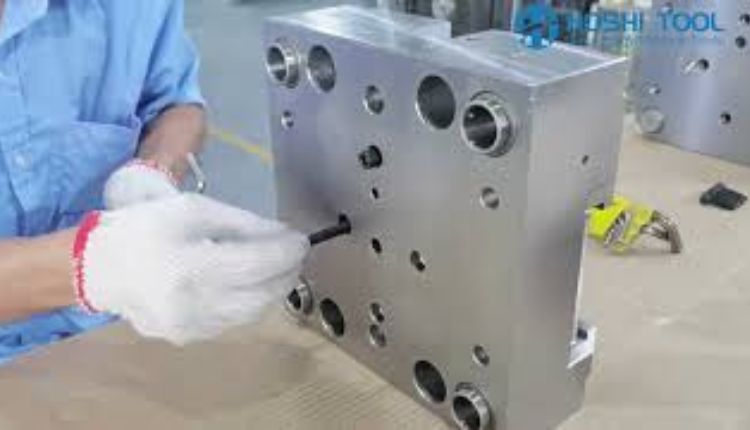Acrylic is a durable and attractive plastic that can be injection-molded into crisply clear and colorful products. It also has excellent dimensional stability and resists a wide range of chemicals. However, as with all plastics, maintaining the optimal temperature during injection molding is essential to ensure a high-quality result. Read on to learn more about the importance of temperature management in acrylic plastic injection molding.
1. Lightweight
Acrylic plastics are a group of synthetic resins that contain one or more derivatives of acrylic acid. These resins are colorless and highly transparent. They can also withstand exposure to sunlight and weathering.
Polymethyl methacrylate (commonly known as PMMA) is the most popular type of acrylic plastic mold. It is available in a range of grades, such as sign-grade, which resists outdoor weathering, and marine-grade, which can withstand continuous exposure to water.
Acrylic injection molding requires a specific set of design considerations to ensure parts are ejected from the mold without damage. For example, part wall thickness should remain relatively consistent to improve moldability and reduce stress concentrations. The injection mold temperature should also be adjusted to strike a balance between product quality and cycle time.
2. Excellent Dimensional Stability
Injection molding requires precise temperatures, accurate molds, and regular checking of variables to ensure consistency. A stable process results in high-quality products that meet design requirements.
Plastics, such as acrylic or plexiglass, that can be injection-molded into crisply clear and colored plastic products are highly sought after for applications such as lenses, vehicle lights, and transparent pipes. Such materials are also resistant to a wide range of chemicals.
Acrylic has low water absorption rates, but it must be fully dried before processing because it can absorb moisture that leads to bubbles or diminished clarity. The injection molding process must be slowed to prevent overheating or thermal decomposition, as well as to reduce cycle times and ensure the product’s quality. Using a pressure ramp, maintaining consistent injection and holding pressures, and controlling cooling rates can help achieve this goal.
3. Resistance To A Variety Of Chemicals
There are various types of plastics that can be used in the injection molding process. Choosing the right one for your project requires consideration of factors like strength, heat resistance, tensile strength, dimensional stability, and chemical resistance. You should also consider whether the plastic will be able to withstand post-processing procedures, such as painting, plating, or surface finishing.
Polyethylene (PE) is the most popular consumer-grade plastic due to its flexibility, low price, and good resistance to chemicals. Its good tensile strength means it can easily be shaped into parts for use in everyday items such as water bottles and bags. The polymer can be coated with flame retardant additives for safety applications. PE is also a durable material for blow-molding films and bottles. ASA is an excellent choice for outdoor goods, with strong UV resistance and optical clarity.
4. Optical Clarity
Known for its crisp clarity, acrylic (also called plexiglass) injection molding produces products that are often used as replacements for glass. It maintains a high light transmission rate of 92%, and unlike glass, it does not develop a green tint or fade in color when exposed to UV rays.
The optical clarity of molded plastics can be enhanced by proper mold design, injection speed, and molding parameters. These factors can also influence the appearance of finished parts, including their texture and surface finish. Unlike other production methods, injection molding requires an initial capital investment in tooling, but it is capable of producing large quantities at competitive prices. This makes it an ideal choice for high-volume production runs. Moreover, injection molding produces a wide variety of finishes and colors that can be applied using different decorating techniques.
5. Scratch Resistance
Although acrylic is durable, it does scratch easily. This is why it’s important to handle finished Acrylic pieces carefully so they don’t get marked up. Scratched Acrylic can be resurfaced with plastic polish solutions to restore its shine and protect its surface from further damage.
Polystyrene (PS) is a common plastic material that’s injection molded into various shapes for manufacturing a variety of products. PS is a variant of the material used to make Styrofoam, and it’s also found in storage containers, plastic packaging, and power tool bodies.
When it comes to plastic acrylic injection molding, there are many factors that must be managed to ensure quality results. For example, it’s critical to monitor the cooling rate of the injected plastic to prevent warping, shrinkage, and distortion.
More Words
Plastic mold acrylic injection molding is a non-toxic process that produces safe and durable products that have an appealing aesthetic. It’s used to manufacture a variety of everyday products such as lenses, paint, kitchen equipment, and device screens. To make sure that molded parts are aesthetically pleasing, proper mold design and material selection is important. Mold cooling and ejection should also be carefully controlled to avoid warping, shrinkage, or other defects.

